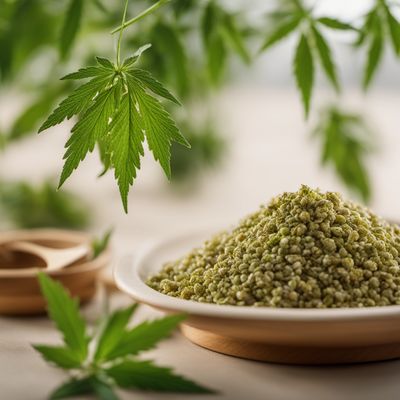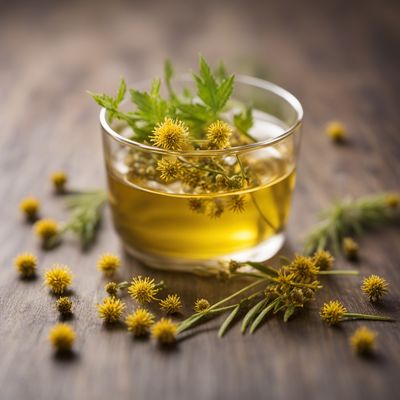
Ingredient
Rock rose infusion leaves
The Fragrant Elixir: Exploring the World of Rock Rose Infusion Leaves
Rock rose infusion leaves, also known as Cistus leaves, are small, aromatic leaves that come from the rock rose plant. These leaves have a distinct resinous fragrance and a delicate, slightly bitter taste. They are typically dried and used to make infusions, teas, or added to dishes as a flavor enhancer. The leaves are dark green in color and have a slightly fuzzy texture, adding visual interest to any dish.
Origins and history
Rock rose infusion leaves have a long history dating back to ancient times. They are native to the Mediterranean region and have been used for centuries in traditional medicine and culinary practices. The leaves were highly valued by ancient civilizations for their medicinal properties and were often used to treat various ailments. Over time, they became popular in culinary applications, adding a unique flavor to dishes.
Nutritional information
Rock rose infusion leaves are rich in antioxidants and are a good source of vitamins and minerals, including vitamin C and calcium.
Allergens
There are no known allergens associated with rock rose infusion leaves.
How to select
When selecting rock rose infusion leaves, look for leaves that are vibrant green in color and free from any signs of wilting or discoloration. The leaves should have a strong, fragrant aroma, indicating their freshness.
Storage recommendations
To maintain the freshness of rock rose infusion leaves, store them in an airtight container in a cool, dark place. They can also be stored in the refrigerator for extended shelf life.
How to produce
Rock rose infusion leaves can be grown in a sunny location with well-drained soil. They are relatively low-maintenance plants and can be propagated through seeds or cuttings.
Preparation tips
To make a rock rose infusion, steep a handful of dried leaves in hot water for 5-10 minutes. The resulting infusion can be enjoyed on its own or used as a base for cocktails, desserts, or savory dishes. The leaves can also be ground into a powder and used as a seasoning or added to spice blends.
Culinary uses
Rock rose infusion leaves are commonly used to make herbal teas, infusions, or added to desserts, such as ice creams, custards, or baked goods. They can also be used as a flavoring agent in savory dishes, such as stews, sauces, or marinades.
Availability
Rock rose infusion leaves are commonly available in Mediterranean countries, such as Spain, Portugal, and Greece, where the rock rose plant is native.
More ingredients from this category » Browse all

Hemp infusion leaves
The Healing Power of Hemp: Unveiling the Potential of Infusion Leaves

Heather infusion leaves
Heavenly Heather Elixir

Raspberry (red and yellow) infusion leaves
The Fragrant Tea Leaves

Yellow bedstraw infusion leaves
The Golden Elixir: Unveiling the Secrets of Yellow Bedstraw Infusion Leaves

Wood betony infusion leaves
The Healing Power of Wood Betony

Blackberry infusion leaves
The Essence of Blackberry Infusion Leaves

Catmint infusion leaves
The Soothing Herbal Elixir

Willow herb infusion leaves
The Natural Elixir: Unveiling the Secrets of Willow Herb Infusion Leaves

Agrimony infusion leaves
The Healing Power of Agrimony

Bitter orange infusion leaves
The Zesty Elixir: Unveiling the Power of Bitter Orange Infusion Leaves

Witch hazel infusion leaves
The Natural Elixir: Unveiling the Power of Witch Hazel Infusion Leaves

Plantain infusion leaves
The Versatile Herb